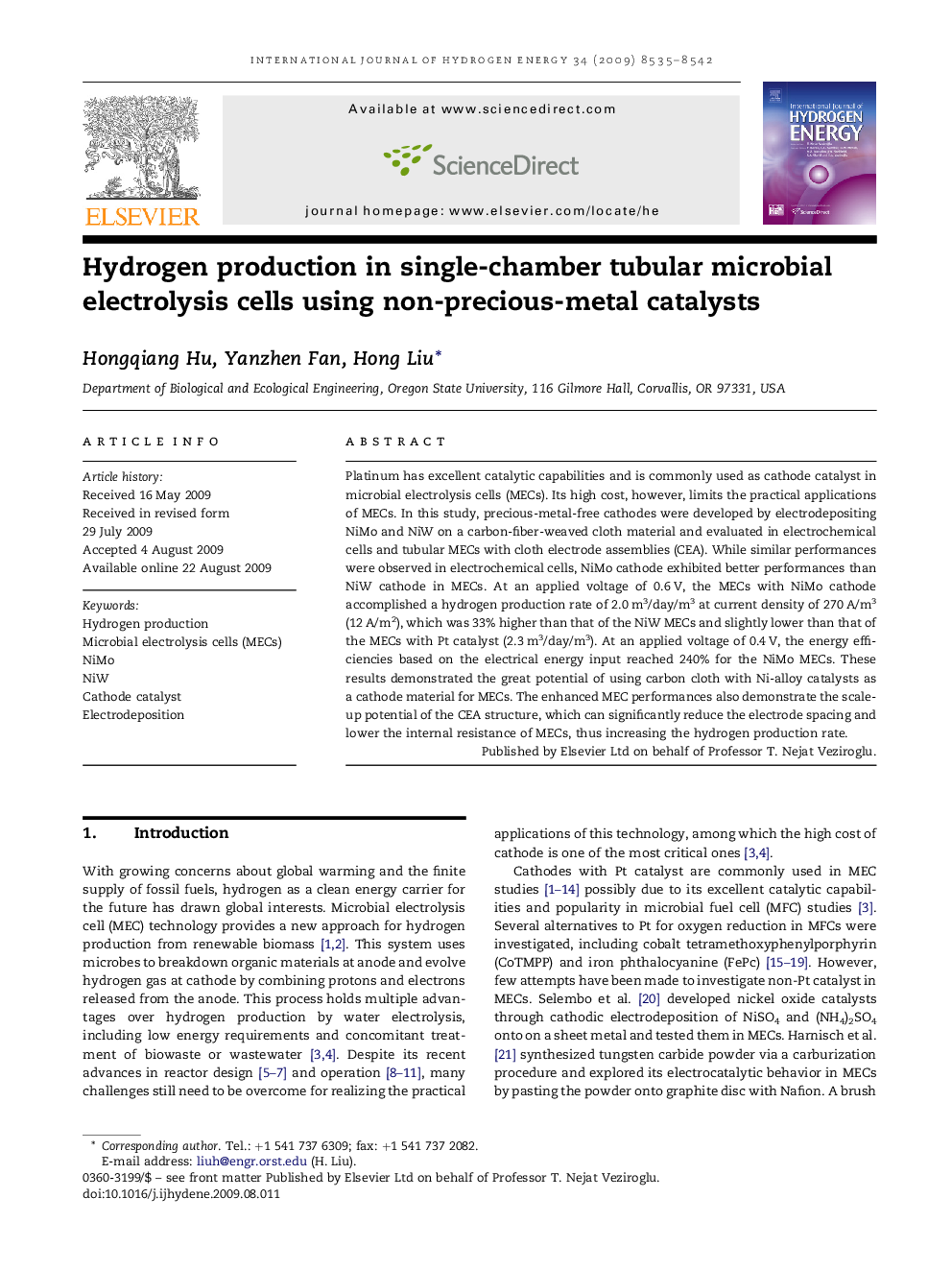| Article ID | Journal | Published Year | Pages | File Type |
|---|---|---|---|---|
| 1278429 | International Journal of Hydrogen Energy | 2009 | 8 Pages |
Platinum has excellent catalytic capabilities and is commonly used as cathode catalyst in microbial electrolysis cells (MECs). Its high cost, however, limits the practical applications of MECs. In this study, precious-metal-free cathodes were developed by electrodepositing NiMo and NiW on a carbon-fiber-weaved cloth material and evaluated in electrochemical cells and tubular MECs with cloth electrode assemblies (CEA). While similar performances were observed in electrochemical cells, NiMo cathode exhibited better performances than NiW cathode in MECs. At an applied voltage of 0.6 V, the MECs with NiMo cathode accomplished a hydrogen production rate of 2.0 m3/day/m3 at current density of 270 A/m3 (12 A/m2), which was 33% higher than that of the NiW MECs and slightly lower than that of the MECs with Pt catalyst (2.3 m3/day/m3). At an applied voltage of 0.4 V, the energy efficiencies based on the electrical energy input reached 240% for the NiMo MECs. These results demonstrated the great potential of using carbon cloth with Ni-alloy catalysts as a cathode material for MECs. The enhanced MEC performances also demonstrate the scale-up potential of the CEA structure, which can significantly reduce the electrode spacing and lower the internal resistance of MECs, thus increasing the hydrogen production rate.
